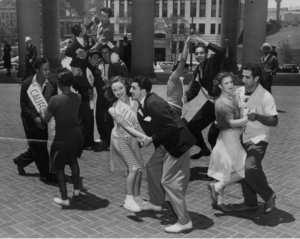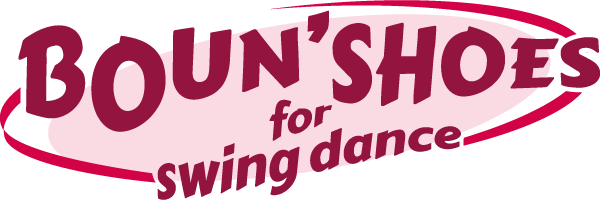Blog
"The Ray Rand Dancers"

On August 21, 1935, the famous Benny Goodman concert was held in the Palomar Ballroom in Los Angeles, what is said to mark the beginning of the Swing Era. The Orchestra, which had arrived here after a fairly unsuccessful tour, did not expect that the hall would explode, and that young Californians would break out into a dance that Benny Goodman and his crew had never seen. The dance was simply called "Swing," because that was the music to which they danced (today we call it SoCal Swing, L.A. Swing, or Bal-Swing).
By 1935, when this new style exploded and teenagers flocked to the Palomar Ballroom to attend their first major swing music concert, the Lindy Hop was already about 8 years old in New York, but there had been no contact between the two worlds, and the generation of young Californians had to invent their own dance from other bases, mainly ballroom dancing and couple's Charleston, thus in a more closed and upright position.
Just as in New York the Savoy was the epicenter of the Lindy hop, in Los Angeles there was the Diana Ballroom, owned by an Italian immigrant named Raymond Randazzo, known as Ray Rand. Ray did as Whitey did with the Savoy Lindy Hoppers, in fact, seeing that there were some very talented guys in his ballroom, he decided to take these dancers and start hiring them for shows, private parties, special dance events, competitions and marathons, creating an organized group: the "Ray Rand Dancers."
The four couples du this dance trupe consisted of Maxie Dorf & Mary McCaslin, Hal & Betty Takier, Lawrence "Lolly" Wise (doesn't this name ring a bell? Like the famous "Bal-Swing" step, the "lollies"?) & Lillian Arnold and Gil Fernandez & Venna Cascon. These dancers became well known throughout the Los Angeles area and were dubbed "The Big Four," the undisputed premier dance troupe on the West Coast.
Of these, according to many, the couple most creative and always looking for new steps to include in the repertoire was the one formed by Hal and Betty, and it was they, in 1937, who had the opportunity to see Whitey's Lindy Hoppers in the movies, in the film "A Day at The Races." They thus saw for the first time the so-called "aerials," created by Frankie Manning and the other Lindy hoppers just a few years earlier, and somehow began to incorporate them into their "Swing," as well as other steps taken from the same film such as the one called "The Lock," the distinctive step of "Snookie" Beasely.
The "Ray Rand Swingers" were an integrated group and had members of different ethnicities, of Mexican descent, and also black, as we can see in some photos.
Roy Damron, one of the original dancers, recounted that his group of friends often went dancing in Los Angeles' black neighborhood, Central Avenue. He said he always felt welcome during these evenings, even though sometimes they were the only white faces present. Roy also recounts seeing black dancers in the halls of white neighborhoods, and says he was always treated warmly by them, and was often asked when he would return to Central Avenue. Damron also recalled that many of the dances in the white quarters ended at midnight, at which point the diehards would go to Central Avenue, whose dances "had just started." This meant that everyone could see each other dancing and could be influenced by each other.
When asked how people danced in black neighborhoods, Damron said, "They did everything we did, but looser."
Unfortunately, World War II put an end to Ray's endeavors. Presumably, work began to become scarce and Big Band music became slower and mismatched with the energy of the dance, so Ray stopped taking bookings in late 1939 or early 1940.
About the author


